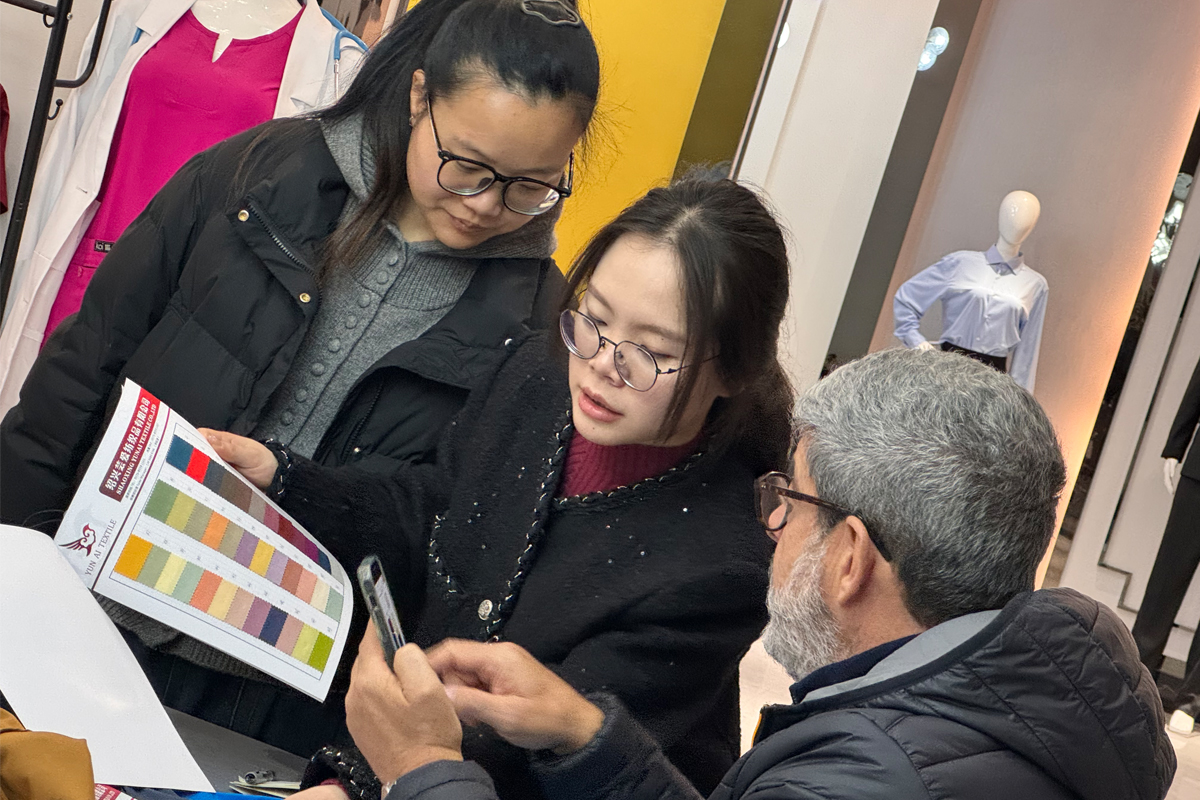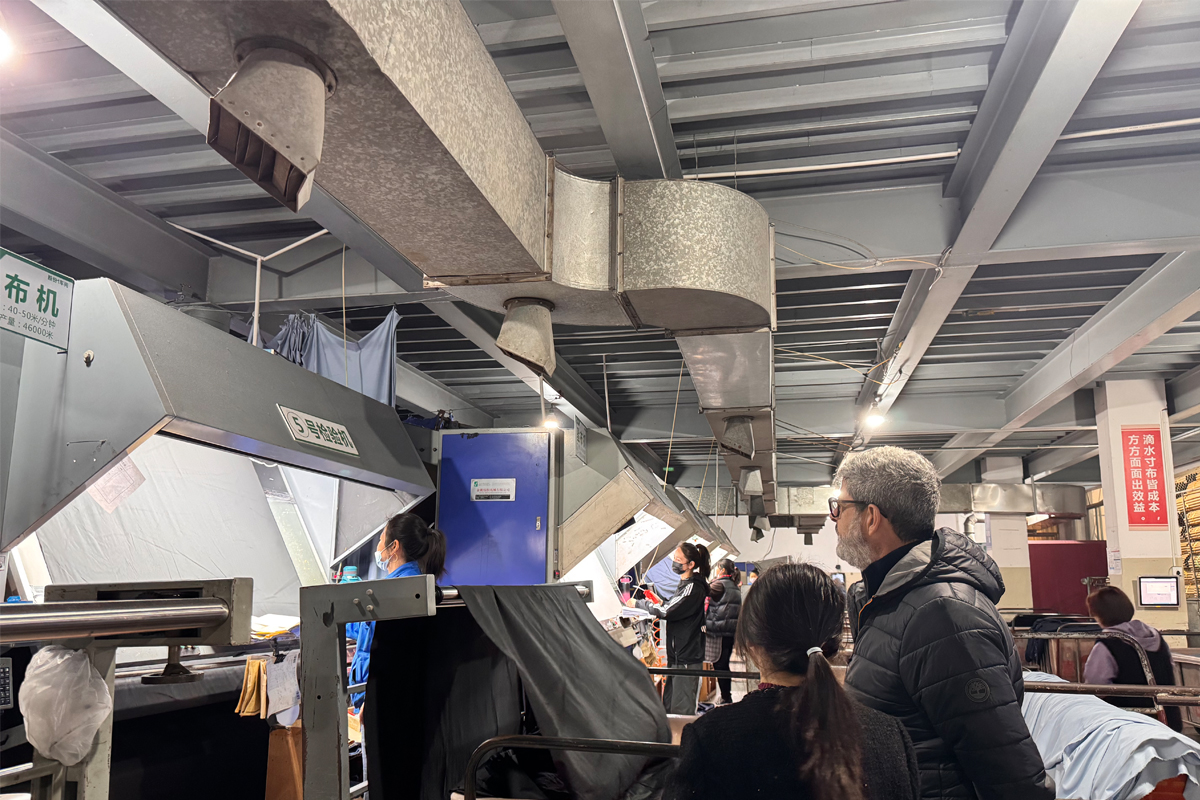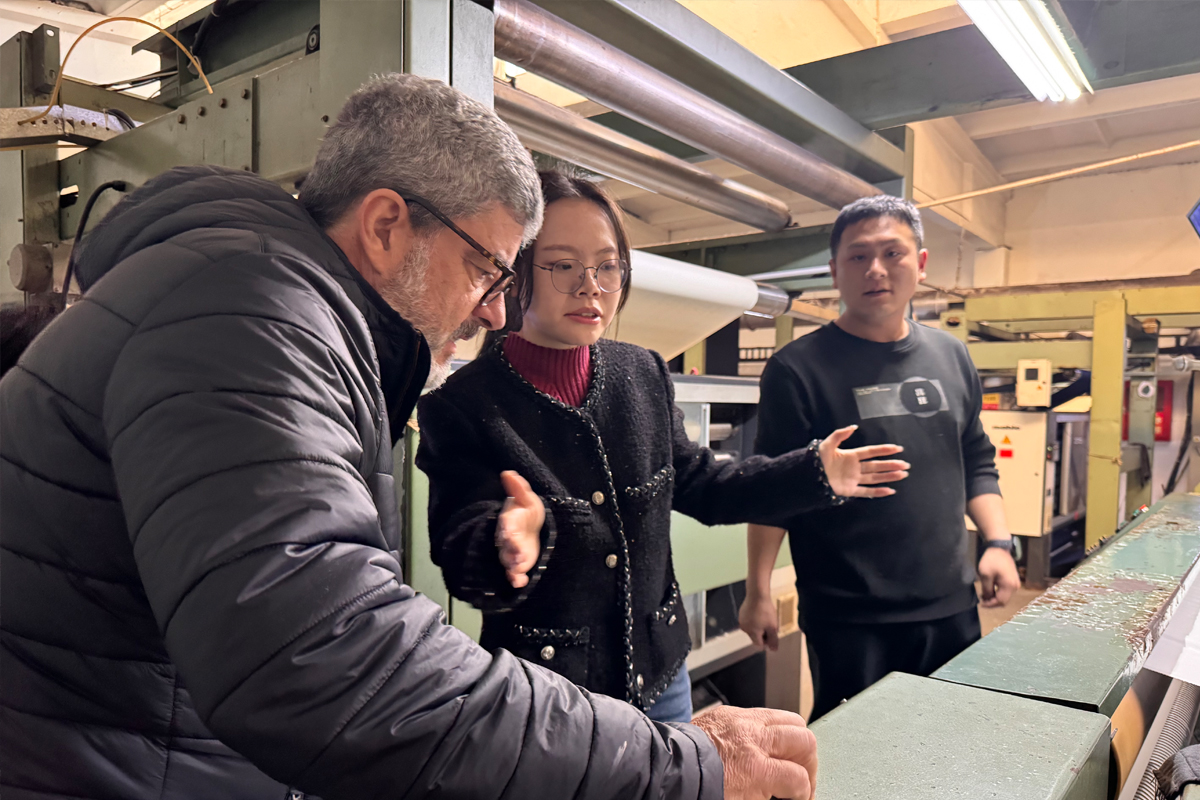Quality fabric is essential to the success of any custom clothing business. When our Brazilian Client reached out, they were in search of top-tier materials for their medical wear fabric collection. Their specific needs motivated us to focus on precision and quality. A business visit, including the opportunity to visit the factory, enabled us to perfectly align our expertise with the Client‘s vision.
Key Takeaways
- Knowing what the client wants is very important. Spend time learning their goals and fabric needs to match their vision.
- Being honest helps build trust with clients. Share updates often and give supplier details to make them feel confident.
- Let clients help pick the fabric. Show them samples and invite them to visit the factory to work together better.
Understanding the Client’s Needs
Exploring the client’s business background and goals
When I first connected with our Brazilian client, I took the time to understand their business thoroughly. They specialized in creating high-quality medical wear, catering to healthcare professionals who needed durable yet comfortable clothing. Their goal was clear: to elevate their product line by using premium fabrics that could withstand rigorous use while maintaining a professional appearance. By aligning with their vision, I ensured that every decision we made supported their objectives.
Identifying fabric preferences and specific requirements
The client had specific requirements for their fabric. They needed materials that were breathable, easy to clean, and resistant to wear and tear. Additionally, they emphasized the importance of vibrant colors that would not fade after repeated washes. I worked closely with them to identify these preferences and documented every detail to ensure no aspect was overlooked. This meticulous approach allowed us to tailor our sourcing process to meet their exact needs.
Establishing trust through clear and transparent communication
Building trust was a priority from the start. I maintained open communication with the client, providing regular updates and addressing their concerns promptly. Transparency played a key role in this process. For example:
- I shared detailed information about our suppliers and their ethical practices.
- I explained how we conducted quality checks to ensure the fabric met industry standards.
Brands like Patagonia have demonstrated that transparency fosters trust and loyalty. By adopting a similar approach, I strengthened our relationship with the client and ensured they felt confident in our collaboration.
Sourcing and Ensuring Quality Fabric
Partnering with reliable suppliers in the fabric business
To meet the client’s high standards, I partnered with suppliers known for their exceptional reputation in the fabric industry. I prioritized those with certifications that demonstrated their commitment to quality and sustainability. For instance, I worked with suppliers holding certifications such as OEKO-TEX® Standard 100, which ensures textiles are free from harmful substances, and GOTS, which verifies the organic status of textiles. Below is a table summarizing some of the key certifications I considered:
| Certification Name | Description |
|---|---|
| OEKO-TEX® Standard 100 | Ensures textiles are free from harmful substances. |
| Global Organic Textile Standard (GOTS) | Verifies organic status of textiles from raw material to final product. |
| ISO 9001 | Indicates high standards of quality management systems. |
| Global Recycled Standard (GRS) | Confirms the percentage of recycled content in textile products. |
These certifications gave me confidence that the fabrics would meet the client’s expectations for their medical wear line.
Conducting thorough quality checks and reviewing test reports
I conducted rigorous quality checks to ensure the fabrics met the required performance metrics. This included reviewing test reports for durability, breathability, and colorfastness. For example, I analyzed results from abrasion resistance testing to confirm the fabric could withstand daily wear. I also reviewed colorfastness testing to ensure the vibrant colors would not fade after repeated washes. These tests provided measurable data to validate the fabric’s reliability and suitability for medical wear.
Presenting fabric swatches and color cards for client approval
Once I identified suitable fabrics, I presented swatches and color cards to the client for approval. This step allowed them to evaluate the texture, weight, and color vibrancy firsthand. I encouraged them to test the samples under different lighting conditions to ensure the colors aligned with their brand identity. By involving the client in this process, I ensured their satisfaction and strengthened our collaborative relationship.
Collaboration and Finalizing the Fabric
Inviting the client to visit the factory for a hands-on experience
I invited the client to visit our factory to provide them with a hands-on experience. This visit allowed them to see the fabric production process up close and understand the level of care we put into every step. By walking through the factory, they could touch the materials, observe the machinery in action, and interact with the team responsible for crafting their fabrics. This personal interaction helped them feel more connected to the process and confident in our ability to meet their expectations.
Showcasing the production process to demonstrate professionalism
During the factory visit, I showcased our production process to highlight our professionalism and commitment to quality. Transparency was key. I explained each stage, from sourcing raw materials to final quality checks. This approach aligned with industry insights, which emphasize that transparency builds trust. For example:
- I disclosed the origins of the raw materials used in the fabrics.
- I shared our return policies to demonstrate accountability.
- I highlighted that 90% of consumers trust brands more when operations are transparent.
These efforts reassured the client that we prioritized their needs and upheld high standards throughout the production process.
Refining fabric selection based on client feedback
After the factory visit, I gathered the client’s feedback to refine the fabric selection. They appreciated the opportunity to provide input after seeing the materials in action. Based on their suggestions, I adjusted the fabric weight and finalized the color palette to better align with their brand identity. This collaborative approach ensured the final product met their expectations and strengthened our professional relationship.
Ensuring quality fabric required a meticulous approach. I followed a structured process, from understanding the client’s needs to refining the final selection. This collaboration resulted in measurable success:
| Metric | Description | Benchmark/Goal |
|---|---|---|
| Customer Satisfaction Score | Reflects customer happiness with purchase and experience. | Over 80% considered excellent |
| Net Promoter Score | Measures customer loyalty and likelihood to recommend. | 30 to 50 for fashion |
| Average Order Value | Indicates customer spending patterns. | $150+ for healthy engagement |
| Conversion Rate | Percentage of visitors making a purchase. | 2% to 4% standard |
Our commitment to quality and excellence is evident through certifications like:
- ISO 9001 for quality management.
- OEKO-TEX® ensuring textiles are free from harmful substances.
- GRS for responsible sourcing of recycled materials.
This project reinforced my dedication to delivering exceptional results in the custom clothing industry.
FAQ
What steps do you take to ensure fabric quality?
I follow a structured process: sourcing certified suppliers, conducting rigorous quality checks, and involving clients in fabric selection to meet their expectations.
How do you handle client feedback during the process?
I actively listen to feedback, refine fabric options, and adjust selections to align with the client’s vision, ensuring satisfaction at every stage.
Why is transparency important in fabric sourcing?
Transparency builds trust. Sharing supplier details, ethical practices, and quality standards reassures clients of our commitment to excellence and professionalism.
Post time: Mar-24-2025




